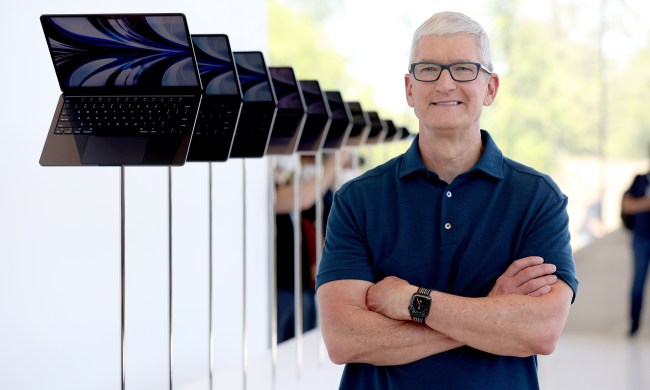Apple has flirted with the idea of putting a touchscreen keyboard on its MacBook lineup for a while now. Most recently, a few patent filings have suggested that the idea could be coming to fruition, and a new filing made public gives us a sneak peek at how such a device could work — and why it could be revolutionary.
This latest patent filing describes a touchscreen keyboard with haptic feedback that actually deforms with each keystroke, so it could feel like an actual keyboard, despite being a glossy touchscreen display. The keyboard would achieve this by embedding an array of haptic actuators beneath the display itself.

A display with embedded haptic feedback would certainly make a new MacBook eye-catching, but there is quite a bit going on here. The patent filing goes on to describe haptic feedback zones arranged in such a way that you would be able to load up different keyboard configurations and still receive accurate haptic feedback.
As these drawings indicate, this isn’t just a touchscreen keyboard. It’s every keyboard, or at least it could be. You could load up an ergonomic layout if you’d prefer, you could move your touchpad to the center of your keyboard, or you could turn the whole thing into a giant play and pause button. For some reason. It doesn’t matter why, the point is: You could do it. And you would still get haptic feedback in all the right places.

Just think about how this could work, the options this could open up for graphic designers, for musicians, for programmers, for anyone who might need more than a typical keyboard could provide. This patent spells out how this custom haptic system could work, but the possible implementations are infinitely more interesting.
As we mentioned, this isn’t the first time we’ve seen Apple flirt with this idea. There are more than a few patent filings outlining how a touchscreen or dual-screen MacBook might look, but this patent does something else: It shows us how it could work, and what that could mean for MacBook — and even iOS users. That’s right, there is a version of this touchscreen keyboard fitted to an iPad Pro keyboard case in the patent filing. It could just be an example, or it could be a glimpse at the future of the iPad platform. Now, what remains to be seen is how this touchscreen keyboard will stack up to Microsoft’s long-rumored dual-screen phone.


